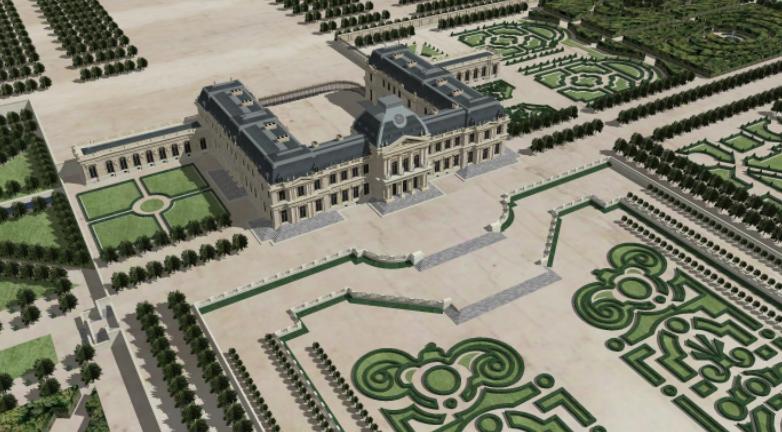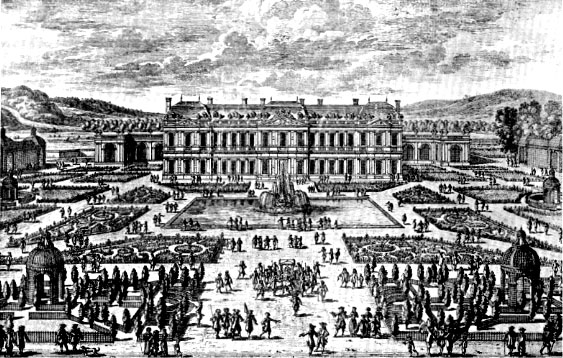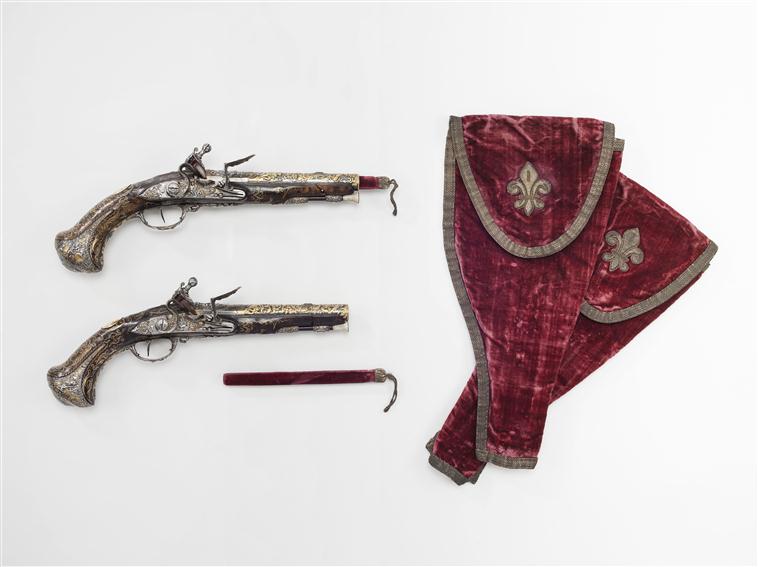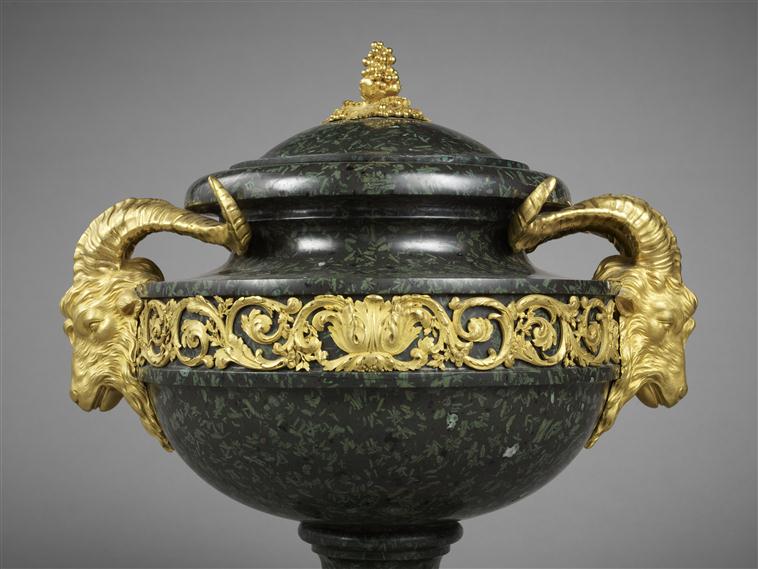King: Louis XIV
Queen: Marie Thérèse
Dauphin: Louis, le Grand Dauphin
Dauphine: Marie-Anne-Victoire of Bavaria
Children of France
Arranged with name, title and relation
Gaston de Bourbon, Duc d'Orlèans - brother of Louis XIII and as such Louis XIV's uncle. It was because of him that Louis XIV's brother, Philippe, had to wait until Gaston's death to be awarded the title of "Monsieur"
Marguerite de Lorraine, Duchesse d'Orlèans - second wife of Gaston
Philippe, first Duc d'Anjou and later Duc d'Orlèans - brother of Louis XIV
Henrietta-Anne of England, Duchesse d'Orlèans - first wife of Philippe
Elisabeth-Charlotte, Duchesse d'Orlèans - second wife of Philippe
Louis, Duc de Bourgogne and later Dauphin - son of the Grand Dauphin and father of Louis XV
Marie-Adélaïde of Savoy, Duchesse de Bourgogne and later Dauphine - mother of Louis XV
Philippe, Duc d'Anjou and later King of Spain - son of the Grand Dauphin
Charles, Duc de Berry - son of the Grand Dauphin
Louis (XV), Duc d'Anjou and later King of France
Grand-children of France
Anne-Marie-Louise d'Orlèans, Mademoiselle d'Orlèans - daughter of Gaston and known as "la Grande Mademoiselle"
Marguerite-Louise d'Orlèans, Grand Duchess of Tuscany - daughter of Gaston (she returned to France in 1675)
Elisabeth d'Orlèans, Mademoiselle d'Alencon and later Duchesse de Guiche - daughter of Gaston
Françoise-Madeleine d'Orlèans, Mademoiselle de Valois and later Duchess of Savoy - daughter of Gaston
Marie-Louise d'Orlèans, known as Mademoiselle and later Queen of Spain - daughter of Philippe
Anne-Marie d'Orlèans, later Duchess of Savoy - daughter of Philippe
Philippe II d'Orlèans, Duc de Chartres, later Duc d'Orlèans and Regent for Louis XV - son of Philippe
Elisabeth-Charlotte d'Orlèans, Mademoiselle de Chartres and later Duchesse de Lorraine - daughter of Philippe
Princes and Princesses of the Blood
Marie de Bourbon-Soissons, Princesse de Carignan - granddaughter of the first Prince de Condé
Louis II de Bourbon, Prince de Condé - son of Henri II, Duc d'Enghien and known as the Grand Condé
Henri-Jules de Bourbon, later Prince de Condé - son of Louis II, Duc d'Enghien and known as "Monsieur le Prince"
Anne of Bavaria, later Princesse de Condé - wife of Henri-Jules and known as "Madame la Princesse"
Louis-Armand de Bourbon, Prince de Conti
François-Louis de Bourbon, Prince de La Roche-sur-Yon and later Prince de Conti
Louis III de Bourbon, later Prince de Condé - son of Henri Jules and known as "Monsieur le Duc"
Louis-Henri de Bourbon, later Duc de Bourbon and Prince de Condé - son of Louis III and acted as Prime Minister for Louis XV
Marie-Louise-Elisabeth d'Orlèans, Duchesse de Berry - daughter of Philippe II and became a Princess of the blood through marriage, known as "Mademoiselle"
Louis d'Orlèans, Duc de Chartres and later Duc d'Orlèans - son of Philippe II
Legitimized children
César, Duc de Vendôme - son of Henri IV
Henri, Duc de Verneuil - son of Henri IV
Marie-Anne de Bourbon, Princesse de Conti (Princess of the blood by marriage) - daughter of Louis XIV and Louise de La Vallière
Louis de Bourbon, Comte de Vermandois - son of Louis XIV and Louise de La Vallière
Louis-Auguste de Bourbon, Duc du Maine - son of Louis XIV and Madame de Montespan
Louise-Françoise de Bourbon, Duchesse de Bourbon (Princess of the blood by marriage) - daughter of Louis XIV and Madame de Montespan
Francoise-Marie de Bourbon, Duchesse de Chartres (Grand-daughter of France by marriage) - daughter of Louis XIV and Madame de Montespan
Louis-Alexandre de Bourbon, Comte de Toulouse - son of Louis XIV and Madame de Montespan
Louis-Auguste de Bourbon, Prince des Dombes - legitimate son of the Duc du Maine
Louis-Charles de Bourbon, Comte d'Eu - legitimate son of the Duc du Maine

.jpg)





























